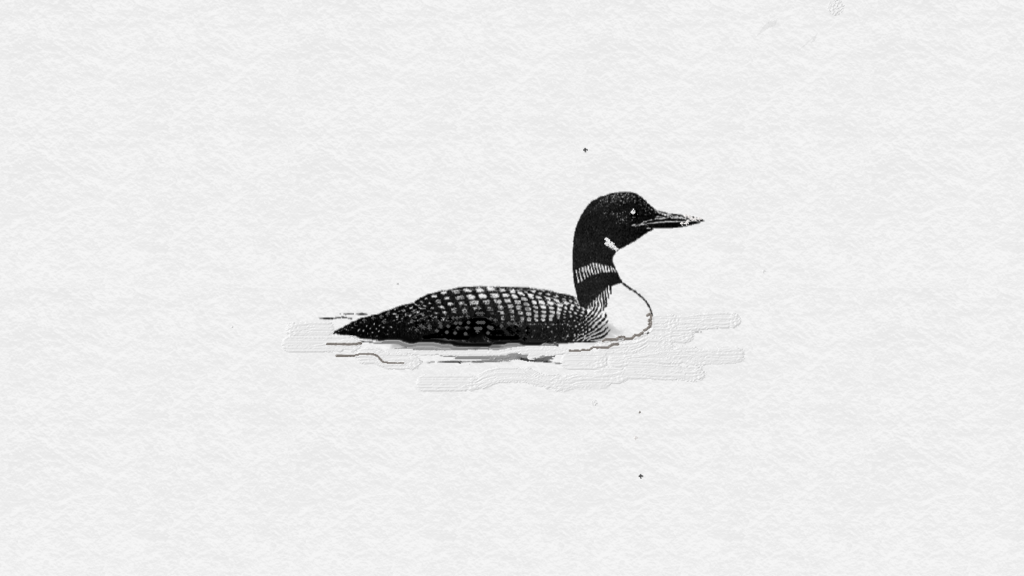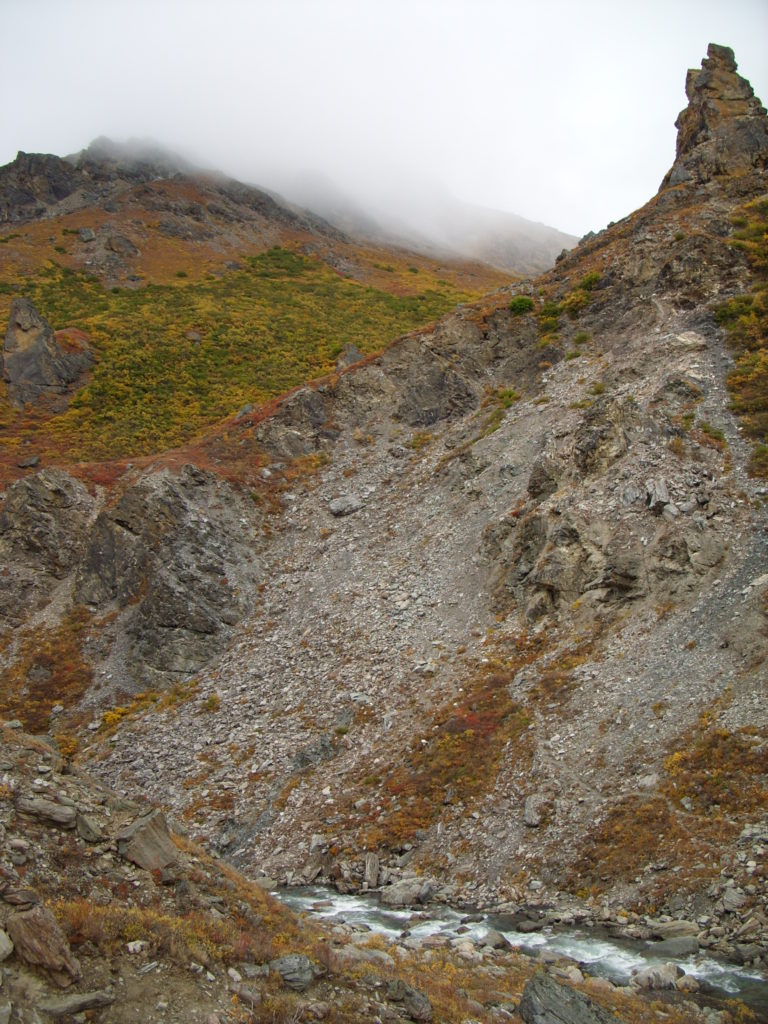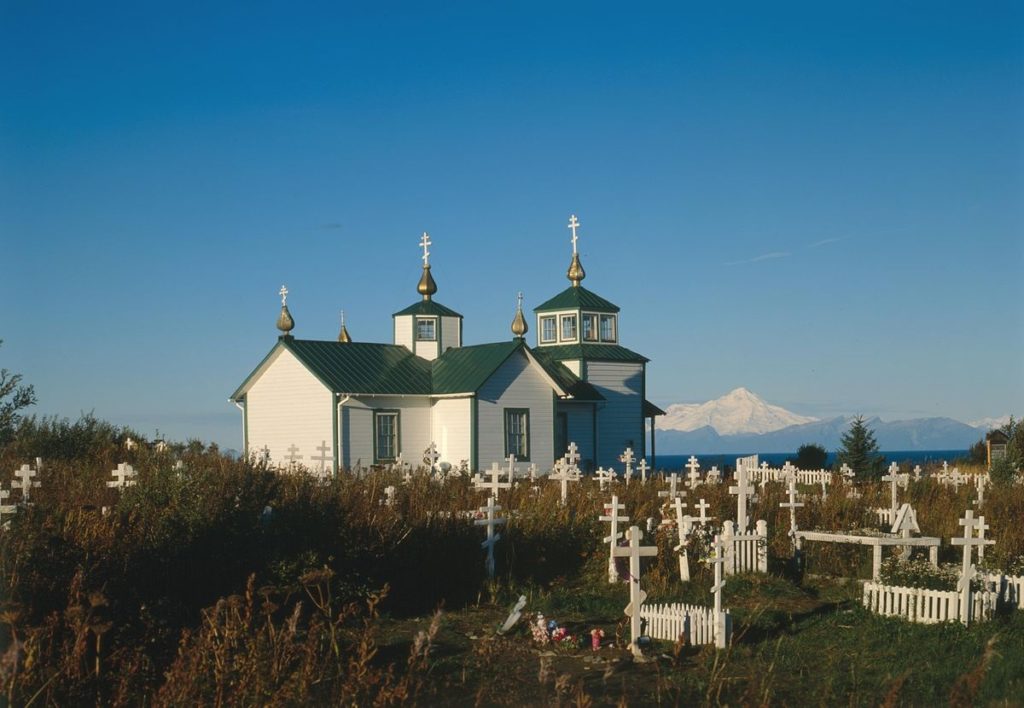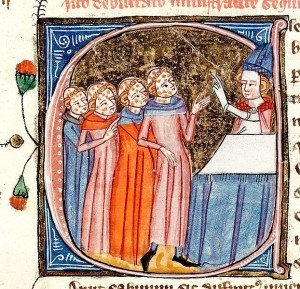Barrow Whaling Festival: the Nalukataq
The fog stretched out like a grey pall beneath us. Visibility was nil; we were as if wrapped in a blinding cocoon as our airplane roared, swung up then down then up again and down. We realised the pilot was trying to land and after several disturbing, aborted attempts, we miraculously touched ground. The Alaska Airlines pilots are obviously highly trained, dealing with such extremes of weather. We’d finally arrived in Barrow on the Chukchi Sea, the northernmost town in America, in the Arctic Circle. The temperature, we were told over the loud speaker, was 0°C (30°F) this July morning. The snow and ice were all around us. This came as a shock after sweltering in the 32°C (89.6°F) of Fairbanks – just 1 1/2 hours south – where we’d been batting off clouds of mosquitoes just the day before. As did the colour scheme: instead of the endless green of the spruce and pine forests around Fairbanks we were now in the land of grey and white as if in a faded old phtograph from a past age, with faces which told us we had arrived in a different ethnic area.
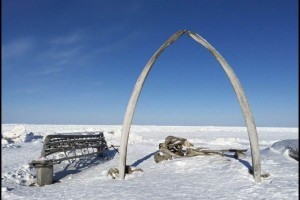
The whale festival is held after the spring hunting season, following the summer solstice. It was

Spike who greeted us with his sprightly grin and baseball cap, a stringy fellow in his mid twenties who was to take us to the hotel. Something about this uncommonly lithe Inupiat reminded me of the playful shaman masks with the mouths creeping up the cheeks we’d seen in the anthropological museum back home. He even had the crows’ feet creases round his eyes. I immediately liked him.
We’d come for the Whale Festival, the Nalukataq, here up on the North Slope. They celebrate this festival around the Summer Solstice and Spike told us we were in luck because this was the first day and if we hurried we could make it for the “serving out”.
The hotel was a long modular strucure on the edge of the ice floe and we were taken t our room by an old Inupiat lady. “Ah yes, dance, dance” she did a little turn for us on her spindly legs, beaming a toothless smile.
All of Barrow with its Inupiat population, many of them trussed up in beautifully designed home made sealskin parkas and mukluk boots, had assembled along the narrow tongue of land that separates the town’s freshwater lagoon from the frozen Chukchi Sea. A horse-shoe shaped plastic barrier had been raised against the blistering wind from the sea to protect the gathering in a kind of improvised amphitheatre. Families were hauling in huge coolers, ice-boxes, picnic boxes, children, puppies, plastic bags, blankets and lawn chairs which they set up before settling and waiting for the ‘serving out’ to begin. At the centre of this ‘amphitheatre’ were three long tables covered with whale meat where groups of men in monogrammed jackets – the whaling crews – were filling buckets of the butchered animal for distribution. Just behind them, more enormous chunks of tail had been piled into two bloody heaps. Fortunately these freezing temperatures spared us the smells.
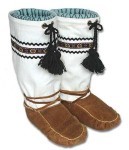
After a few ceremonial speeches, given by prominent members of the local council in the local language while a lemming ran randomly round the crowd, the whaling team members distributed the meat to each family seated in the ‘amphitheatre’, the idea being to share it out to all the village inhabitants. Dark rubbery lumps of flesh were ladled into coolers and plastic bags and some people started immediately to tuck in to the bits from their plastic bags. Before we knew it, a crew member was dangling a ruby-dark morsel in my husband’s face. We felt like intruders in our colourless parkas, but he encouraged us. “Try some, try some” the smiling Inupiat man hustled us up to the table. My husband tasted it. “What’s it like?” I whispered gingerly. He thought for a moment, chewing warily. “Muscular sushi, salted beetroot – frozen,”’ he said quickly and smiled a thank you to the man. I wasn’t so adventurous, couldn’t be so polite and declined as decently as I could: a friend had warned us the taste can linger for weeks. Then came the translucent strips of blubber and skin called ‘muktuk’. A large woman hidden in an even larger fur parka was shaking dashes of spice over a piece which she thrust heartily into her mouth. My husband tried a piece: “gritty” he said, “tough as roofing paper,” and spent the next fifteen minutes picking the skin from his teeth. Perhaps we should have tried the cream cakes, made of whipped baleen oil fat…

When all the flesh had been distributed, the families – with their share of meat in their coolers – drove off in their trucks and jeeps to drop the meat into the deep pits they’d dug in the permafrost outside their houses to store it all for the next few months. William – who we befriended at the hotel (see Whaling Ancient and Modern) warned us not to walk around the area afterwards because the whale blubber melts. It gets into your shoes and the smell clings.
Melting ice cellars up here with rotting whale meat is indicative of serious problems threatening health in this once pristine land. It is a well known fact that with global warming the permafrost is melting. Water supplies could go dry. Rusted cars and other metal objects buried or left on the ground contaminate the water. Pollution from nearby Prudhoe Bay with the oil drilling, although contained, means land and sea are at risk. Indeed, toxic waste from abandoned military sites in Alaska dating back to World War II found to be responsible for contaminating soils led to a huge and active environmental cleanup paid for by the US Department of Defense. Scientists from over a dozen federal agencies drew up a plan for how they can collaborate and proceed with the many changes being studied in the Arctic, the emphasis being on human well-being. Check in on this website.
But to get back to our Barrow whaling festival :the ‘serving out’ now over, the place was cleared to make way for the blanket toss. The men unrolled a huge stretch of walrus hides sewn together with sinews, and haulted it up over a pair of T-frames stuck into the ground, then fixed the corners onto the frames with thick ropes so the ‘blanket’ spread out suspended in the air.
The whaling crews, children and young men and even some ladies in their dashing parkas drew up ready for the trampoline fun, snatching the edges of the walrus skin and tugging at it to give some impetus when the jumper threw himself on.
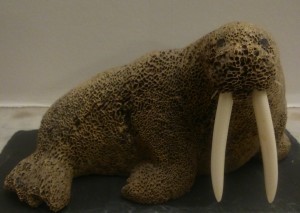
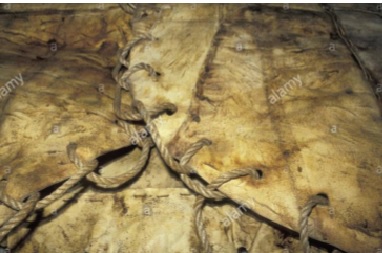
One by one they threw themselves on the hide. Up and down each one went, the idea being not to fall down or be bounced off while they were being thrown higher and higher into the air. The children were first, trying their balance, some falling before they’d even started to jump and collapsing in heaps of laughter. Then came one of the whalers: up and down he went, higher and higher, not quite athletic perhaps, but holding himself stock still apart from the occasional agile kick of his heel at the height of a jump. He turned in the air to face the Chukchi Sea and, shading his eyes from the sun with his hand, kept shouting “I don’t see one!” because the origin of this game is to watch out for the polar bears, the whales out at sea on the endless Arctic horizon, and give warning.
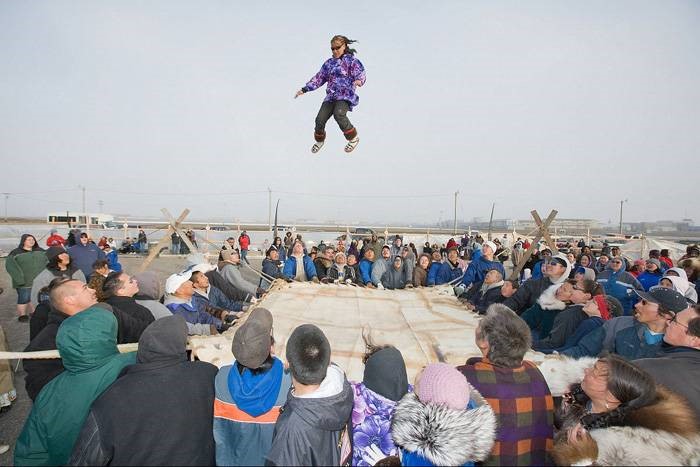
While we have him up there, just a quick aside on this playful people: the Inuit love games. From a very young age children are encouraged to play and so build up their mental and physical skills to survive in a harsh landscape. From cat’s cradle to yoyo to the gyrations on the blanket toss, to the knuckle hop where you get across land horizontally, your legs stretched out and bouncing on your knuckles (to keep in line with the horizon so animals can’t see you), then on to the high kick where you kick a hanging target… over to singing games where sophisticated guttural singing is done in a face to face challenge to which singer crack up laughing first. The list of games is long. The Native Youth Olympics, the Arctic Winter Games, and the World Eskimo-Indian Olympics are highly visible events that include traditional Inuit games.
We noticed how much these people smiled and laughed – but not only when playing games. Despite the difficult life style they lead under such harsh conditions, everywhere they were smiling. Being amongst them was a huge boost to the morale.
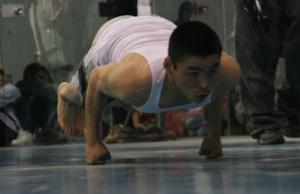
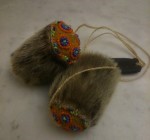
Back to our whaler in the air. Suddenly he thrust his hand into his pocket and threw up an array of ribbons and sweeties before landing. The children squealed, ran to pick up all the goodies and when he’d emptied his pockets he jumped off. Others followed: more ribbons and talismans flying in the air and caught by the crowd.
But for those of us who didn’t join in, the cold was getting to us and we were about to leave when suddenly we saw something. We stopped in our tracks. Who was that up there in the air, soaring high, then turning, somersaulting wildly, landing on his feet perfectly each time on the hide, flicking his body round, leaping up again? There was our Spike, twisting and turning in mid-air above us, our lithe young Inupiat athlete who wouldn’t be toppled; like a yoyo he went, grinning at everyone – and us.
We returned to the hotel to get warm before the night’s entertainment which was to take place in the hall on the edge of the town. We stood at our window looking out to the frozen Chukchi Sea and saw two men with spears hauling an umiak over the ice floe. It was a long way out to the unfrozen water but we could see they had harpoons Off to catch seals, or Polar bears? (Read about indigenous hunting here, subsistence hunting here)
We made our way over the icy track to the gymnasium where, the old lady at the hotel had told us, we’d find dancing and games going on throughout this daylight night. It was half past midnight and the place was already packed, the floors and walls jumping with the stomping of feet and the thunder of drums. We recognised many in the crowds from the ‘serving out’ of the whale meat earlier on and who were now milling round the edge of the gymnasium, watching the men and women inside gesticulating and spinning, imitating eagles, ducks (“ahaliks” our Spike had told us), caribou, owls, their feathered arms flailing, faces creasing up, and the hand drums punctuating each pace. An old lady – even older than our hotel lady – came rolling in in a wheel chair and waved her arms in a particularly mesmerizing attempt to dance in her own way the eagle dance and the men crowded in to embrace her. Given her welcome from the crowd she was obviously a revered person and we learned later that it was she who had organised all this dancing. Children wandered in and out of the performers joining in, imitating the movements and rolling around on the floor. Not everyone had dressed up in costume, and after a few groups of dancers and drummers had finished it was a free-for all when anyone who wanted to stepped in with those facial grimaces, gesticulations and laughter which were so contagious. Surprisingly there was no singing although the occasional shout from the men while they were dancing imitated the call of the animal they were imitating.
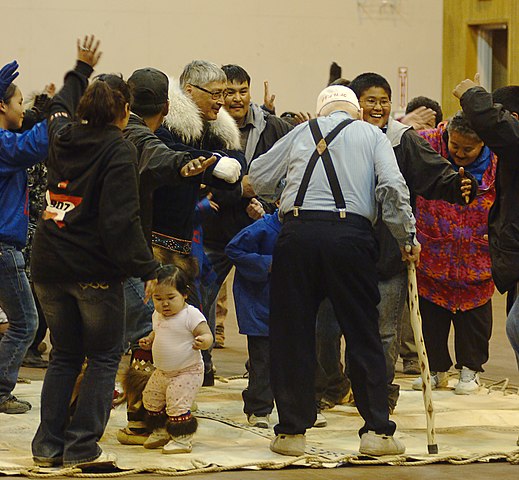
On and on they went, everyone taking his turn to join in until we left exhausted back into the endless daylight. Tomorrow, we decided, we’ll find out who it was out there on the ice floe with their umiak. Through our binoculars one of the men had looked familiar. Had we not seen him in the hotel?
Read more about who was on the ice floe in Whaling Ancient and Modern.




